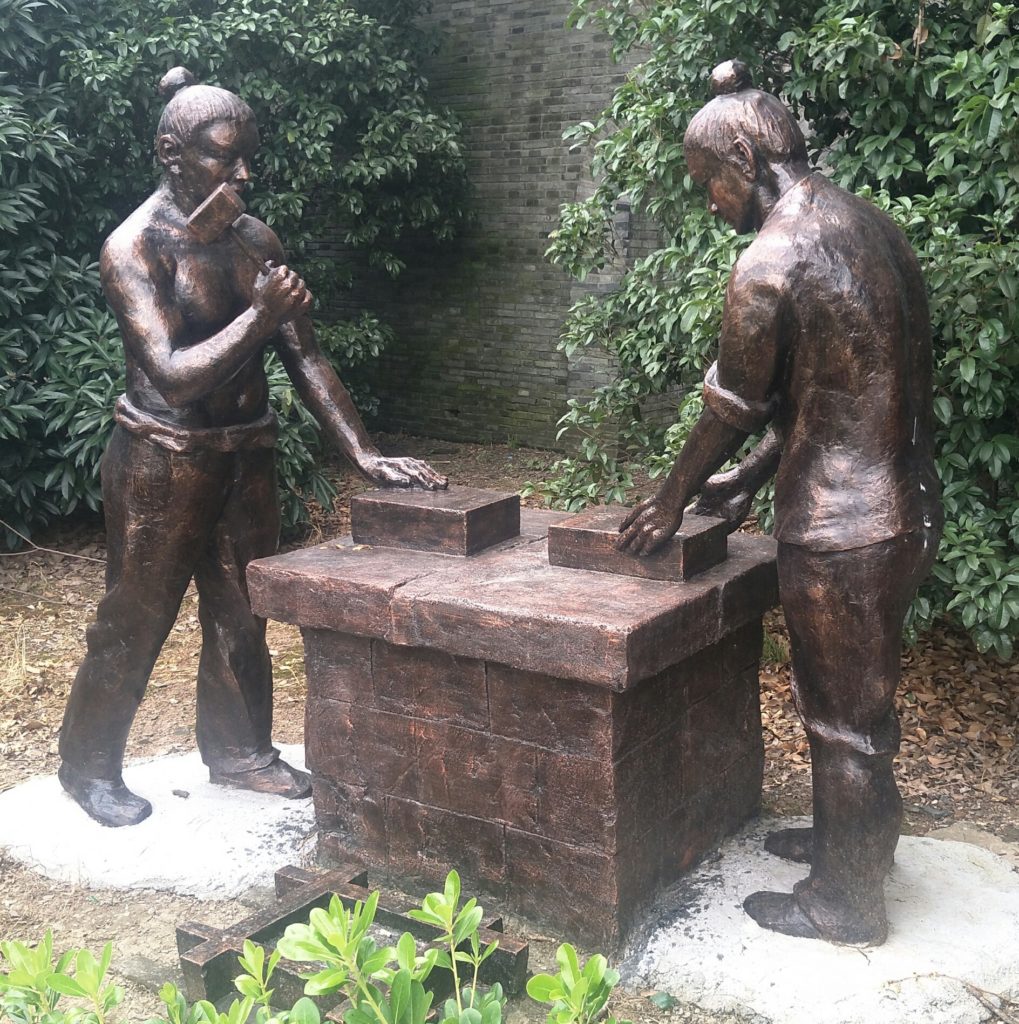This post was originally published in 2018.
Typically, when one mentions “half naked woman riding a dragon,” one might either thinking 1980’s heavy metal album covers or fantasy mass market paperback covers. Dungeons and dragons and role playing games might also be involved in that thought process. If you image search “half naked woman riding a dragon” on Google, you might get the following results. I sort of did.

This is, of course, dragons in a western context. Turns out, it can be more of cross-cultural idea in art. In Changzhou, there is a stone mural of depicting the same thing.

In this case, the woman is holding what looks to be a shiny orb. This is likely a flaming pearl, which in some Asian cultures can be associated with spiritual energy. A lot of depictions of Eastern dragons come with some sort of pearl references. All of this is lore and mythology that, quite honestly, I need to learn more about. The above picture had me intrigued partly because it was in an unassuming park that I have passed by for years but never took the time to actually walk around in.

The public space is Qingshan Zhuang 青山庄. It’s actually part of the ancient canal network that has been part of Changzhou for thousands of years. The Beijing-Hangzhou Grand Canal flows into into the city and splits into what can be described as a series of offshoots, tributaries, and a moat-and-wall complex around what used to be ancient Changzhou. In the above photo, you have the characters 北塘 běi táng. This is the part of that canal network that splits off of the central city canal circular and heads north.

A good portion of this canal is adjacent to Jinling Road, but it’s at the point where that road forks into two one way roads downtown. This is why, for example, the 302 bus route from Wujin to Xinbei is different from it’s course from Xinbei to Wujin when going south.

Qingshan Zhuang, as a public green space, is actually split into two. There is part that straddles the Beitang Canal (where the half naked dragon rider can be found), and then there is the other part across the busy street. It’s mostly a small public space with benches. There are also a few bits of public art here, too.

Here we have a primate eating something oblong. Mangos are oblong. They are also quite delicious, so my personal interpretation and title would be “Monkey Eating a Mango.”

I am not going to venture a guess as to the meaning of this.
At anyrate, Qingshan Zhuang is definitely not one of Changzhou’s major or culturally significant spaces. For many of us, it’s just something we have passed by on a bus while going someplace else.













